Lewes Crescent and Sussex Square
Please note that this text is an extract from a reference work written in 1990. As a result, some of the content may not reflect recent research, changes and events.
d) LEWES CRESCENT : This magnificent crescent, with a span of 840 feet, has twenty-eight four-storey houses which follow Busby’s original plan of every third house bearing giant Corinthian pilasters and iron balconies; those on the eastern side also have Doric porches and verandahs. The fa..cs.ades were completed by 1827, but most houses remained shells for several years.
Builder Thomas Cubitt lived at no.13 from 1846 until 1855. Nos.15-16 were used as a military hospital during the First World War. Fife House, 1 Lewes Crescent together with 14 Chichester Terrace, was the residence of the sixth Duke of Devonshire from 1828 until 1858; the embankment down to Madeira Drive in front of his house is named Duke’s Mound after him. From 1896 until 1924 this house was the home of Princess Louise, daughter of Edward VII, and her husband the Duke of Fife; the King himself stayed here during his convalescence in 1908. No.18 was the home of actress Anna Neagle and her producer husband Herbert Wilcox from 1953 until 1969. Their neighbour at no.17 for a number of years was Lord Frederick Elwyn-Jones (1909-89), a Labour M.P for nearly thirty years, a prosecutor at Nuremburg, and Lord Chancellor in the 1970s.
e) SUSSEX SQUARE: Measuring about 300 feet wide by 550 feet long, Sussex Square was commenced in 1823 and the fa..cs.ades were complete by 1827, but most of the fifty houses were mere skeletons which were let or sold for completion. No.25 was the first private house on the estate to be occupied, in 1826 by Philip Storey, Kemp ‘s brother-in-law. Kemp himself lived at no.22 from 1827 until 1837. All the houses have four storeys, Doric or Ionic porches, and ironwork balconies; every third house has pilasters, mostly with Corinthian capitals, but several houses remain unstuccoed and are faced with yellow brick. The centre-piece of the square is the pedimented nos.24-27, all decorated with Corinthian pilasters. No.32 Sussex Square even has giant, fluted Ionic pilasters on its rear facade in Bristol Place.
The square naturally became the residence of the rich and famous. Perhaps most famous was Revd Charles Dodgson, better known as the author Lewis Carroll, who lived at no.11 from 1874 until 1887. Nos.19-20 were the home of the first Marquess and fifth Earl of Bristol between 1831 and 1859. Formerly Under-Secretary for Foreign Affairs in the Addington government of 1801-4, he was created Marquess in 1826, and was an important local landowner who contributed land and finance to many local institutions. The Marquess died on 15 March 1859 and was buried in the Lewes Road Parochial Cemetery (now Woodvale) . He is commemorated by several streets in the Kemp Town area, by the Bristol public house, and by the Bristol estate .
Any numerical cross-references in the text above refer to resources in the Sources and Bibliography section of the Encyclopaedia of Brighton by Tim Carder.
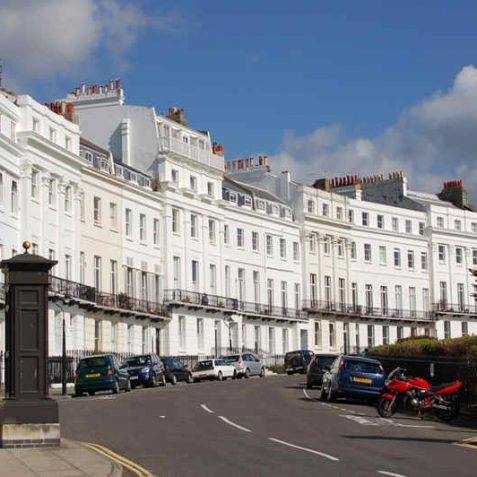
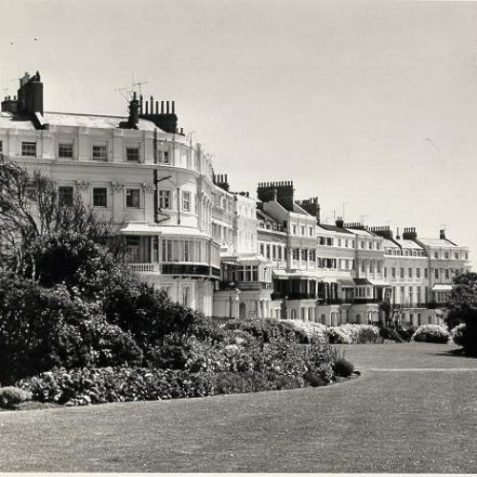
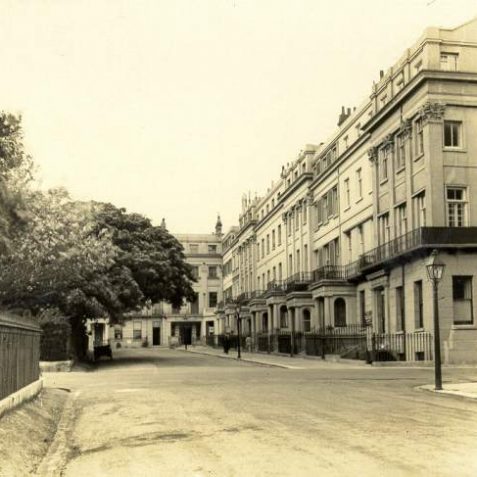

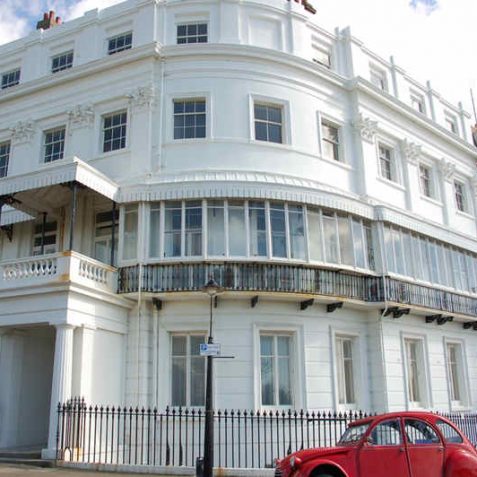
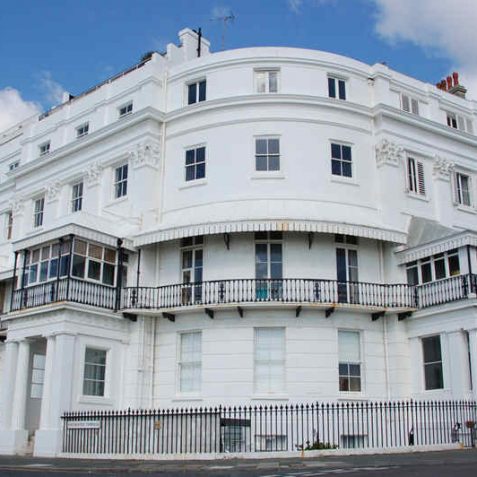
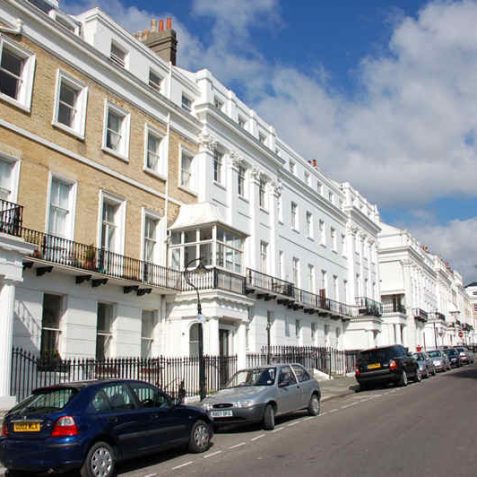
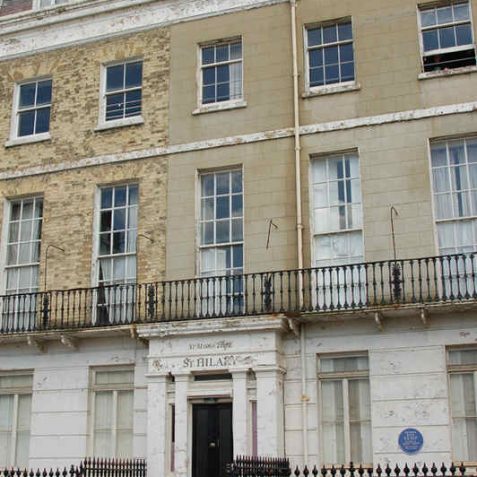


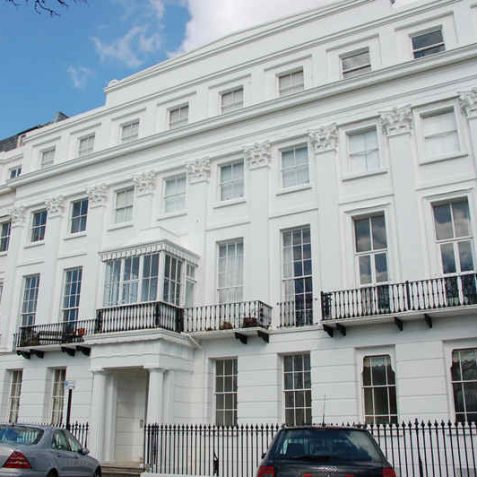
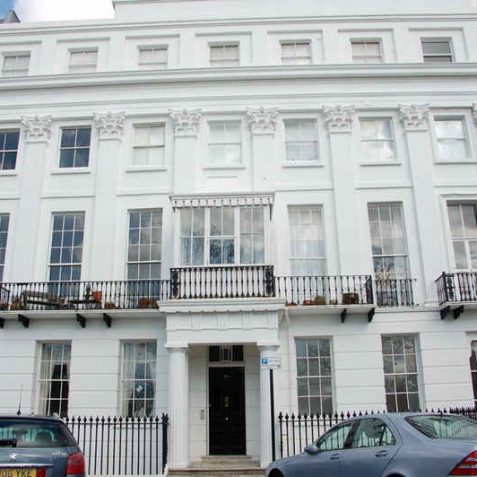




Comments about this page
I thought you might like to know that 28 Sussex Square was owned and occupied by Henry Kendall, Consul for Peru and London banker. I do not know when he began to live there but it was given as his address when he wrote his will in 1870. He lived an adventurous life, travelling to and through South America as wool factor and part of the family business located at Basinghall Street in London. We have his notebook describing his travels through France and Spain on his way to Peru in 1823.
(I must make it clear that our Henry Kendall appears to have no connection Henry Edward Kendall, just in case there was a query.)
Does anyone happen to have a picture of Number 28 and if so, may I use it on my pages of family history, acknowledging the photographer? Thank you and best wishes.
After my father died, my mother decided to go back to England in 1961. We lived in the lovely ground floor flat of 28, Sussex Square. I shall try and find you a photograph . All the best Elisabeth Masoin
30 Sussex Square was a Ladies’ School in 1878 Post Office Directory and 1882 Kelly’s Directory. The principal was Miss Charlotte Lindsay Duncan, born about 1830 in Guernsey, Channel Islands. In the April 1881 UK census, she had 14 girl boarders and 3 governesses. Beatrice Wallis, age 17, was a domestic servant / housemaid in the school. Beatrice married Silas Holford at St Peter’s Church in July 1882. I believe they met when he delivered milk to the school from his family farm. They lived at New House Farm (now East Brighton Park caravan site) and raised 13 children, the youngest, Norman, was my grandfather.
I have resided at 34 Bristol Gardens for the last 18 years. This house was built in 1824 and is part of the original Sussex Square freehold abutting No.31 Sussex Square to the rear. It is my understanding that this was a servants’ house for Sussex Square. It appears that there may have been direct access between 31 Sussex Square and my house. My house would have looked north onto the open downland behind the newly built Sussex Square. And the extensive underground cellars under my house I would suggest may have taken deliveries (coal?) on behalf of the Sussex Square residences. While dividing watchmen like security on the open rear countryside. I’m honoured to be living in one of Kemp Town’s few remaining whole original Georgian houses.
I currently live in the ‘ lovely spacious ground floor flat ‘ at No 28 Sussex Square. I am delighted to find these clips of information as I am the editor of Who’s Been Living in My House ( kemptownestatehistories.com )and have nothing in the House History for No 28 so far. The piece about Henry Kendall will be added ASAP. Thankyou.
Thanks for your comment Vanessa.
I am so pleased the information is of use to you
Jennifer
Website Editor
Did you manage to get your photo of 28 Sussex Square? as I’m living there at the moment …
Hi
I’ve picked up a book today in a charity shop from 1841.
It has a beautifully written but very faint inscription, signed off by F L Scott with an address of 15 Sussex Square.
I would love to know more about this person if possible and was wondering if they could be linked to Sussex Square in Brighton.
Is this a name you would be aware of?
Thanks,
Shane.
If indeed this does refer to Sussex Square Brighton; Number 15 is about half-way up on the Western side of the upper part of Sussex Square, that is to the north of Eastern Road.
Unfortunately, at that time many of the houses in Sussex Square and Lewes Crescent were leased off as schools so your F L Scott may well have only been there a very short while. Staff and servants came and went quite frequently as well. Those initials don’t seem to tie up with any Scott on BMDs in Sussex, pity they didn’t give their name!
Might be worth trying MyHouseMyStreet, – mhms.org.uk which could give a bit more information. (I can’t access it at the moment.) Also the 1841/51 Censuses. The lady a couple of postings above might have some info. I lived at No 38 on the opposite side for twelve years.
PS: Further to previous posting.
Just got into mhms.org. An unknown directory from 1843 gives No 15 Sussex Square as occupied by;
Scott, Miss Francis.
(Maybe should have been ‘FrancEs?)
I haven’t checked others.
As I surmised previously this was a school for girls at that time. KempTownEstates gives the 1851 Census;
No 15: Francis Jane Scott, Head, Age 30, Female, Teacher. Born Bristol Gloucestershire. She is listed there from c1846 to c1850 when it became a ‘Ladies School’ run by the Misses Jeaffreson until 1878. Not stated if it remained a school after that date. 9 other staff listed in 1851 and 24 girls between 11 and 17.
I am sure that there is a discrepancy over the spelling of Francis as Frances is the female version and I suppose the writing in your book being faded it was easy to read the ‘J’ as an ‘L’. The old Victorian script doesn’t help either! I haven’t found any further trace of her though. What is the book about?
I am also interested in the school at No 11 which was a Boys Boarding School run by various clergy including Rev Henry Laing at one time. When a Reverend Henry Barclay later ran that school Charles Lutwidge Dodson (Lewis Carroll) was a friend and frequent visitor.
It seems that all these schools tried to go up-market as when Laing was running his school it was a ‘Boys Boarding School’, but by the time Rev Barclay is running the place it has become a ‘Gentlemen’s School’! TCS.
I recently purchased in a secondhand book shop in Haywards Heath, “There’s Always Tomorrow”, which is Anna Neagle’s autobiography. With her husband Herbert Wilcox she lived at No 18 Lewes Cresent for many years. When I got home and had a closer look at it I found the fly leaf was signed,…..
“To Herbert With Love”.
We lived at No 38 Sussex Square and I had met Anna.
Add a comment about this page